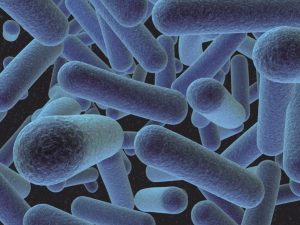Emergency Pathogen Control – Listeria Monocytogenes
Factory Clean
Targeting Listeria Monocytogenes
Contact our emergency cleaning team by emailing [email protected].
Listeria Monocytogenes is one of the leading causes of death from foodborne illness? Next to creating nausea, vomiting, aches, fever and diarrhoea, it can also spread through the bloodstream to the nervous system, resulting in meningitis which can be fatal. Listeria Monocytogenes cases are not linked to one specific type of food; they have been traced back to e.g. raw or under pasteurized milk; smoked fish and other seafood; meats, cheeses (especially soft cheeses) and raw vegetables.
 Once you have Listeria Monocytogenes in your factory, you will find it is very difficult to get rid of it. The underlying reasons for this are that Listeria Monocytogenes tolerates salty environments and cold temperatures, it can even continue to grow at temperatures as low as -1.5˚C. Next to this is known that Listeria Monocytogenes will even survive temperatures as low as -25˚C (and lower). So tactics like keeping your product frozen at very low temperatures for a while as a kill step does not work with Listeria Monocytogenes. We must note here that although some manufacturers are using freezing as a kill step this practice should be taken with a lot of precaution.
Once you have Listeria Monocytogenes in your factory, you will find it is very difficult to get rid of it. The underlying reasons for this are that Listeria Monocytogenes tolerates salty environments and cold temperatures, it can even continue to grow at temperatures as low as -1.5˚C. Next to this is known that Listeria Monocytogenes will even survive temperatures as low as -25˚C (and lower). So tactics like keeping your product frozen at very low temperatures for a while as a kill step does not work with Listeria Monocytogenes. We must note here that although some manufacturers are using freezing as a kill step this practice should be taken with a lot of precaution.
Role in Food Processing
This bacteria has a growth range in temperatures of -4°C to 37°C. As a result, Listeria is commonly found in refrigerated foods, both processed and unprocessed. Commonly found in raw milk: is also found in common food groups.
This bacteria has been researched in depth, esp. with high mortality associated with young and elderly.
Those most susceptible to infection are pregnant women, alcoholics, young children, and the elderly, and immunocompromised individuals.
USA, 1993, in 1092 cases, 248 died.
In USA, acceptable limit = absence in 25g samples.
In EEC, cheeses = nil. Absence in 1g of other products.
Canada. Absence in high risk foods. Low risk = Category 3 foods <102/g.
France, absence in 25g samples for at risk individuals.

- pH: 4.1 – 9.6 Optimum 6.0 – 8.0
- Temperature: Minimum 1oC, Optimum Growth 10oC to 40oC
-
Pathogenic strains produce a β haemolysin, Listeriolysin O.

Found in decaying vegetation, and in soils, animal faeces, sewerage, silage and water.
Spreads both aerially and mechanically.
Is secreted and excreted by animals.
Is secreted by infected man and colonizes in intestines.
Associated with animal products; milk, meat, carcass, dairy products.

Screen staff for bacteria and any residing on farms, plots, holdings.
Check crates for biofilm, cleanliness, sanitation and rotation.
Pay particular attention to slaughter areas, evisceration and offal areas.
Minimise cross contamination by enforcing colour coding.
Clean and sanitise:
Drains, chillers (door handles), non production equipment esp. that moving between departments = ladders, tool boxes, trolleys (wheels).
Treat with residual sanitisers, air circulating equipment = condensers, drip trays, fans, vents.
Sanitise ceilings and monitor condensate.
Check toilet facilities including hand washing.
Acid Wash – This should be used in all cases of Pathogen or high bacterial counts.
It removes scale, which is a base for biofilms.
It will aid removal of biofilms.
The acidic environment will at least inhibit, if not halt the growth of bacteria.
If followed by standard alkaline wash, the resultant pH shock will again kill off most bacteria, and at least severely inhibit growth.
The alternative sanitizer (prescribed as part of acid wash), will at least inhibit, if not halt the growth of bacteria.
Monitoring
Movement of staff and materials between slaughter and other departments.
Monitor crates and lugs with extra swabbing. Raw material handling including delivery containers.
Review production facility swab results. Plot positive results on scale site plan, look for common factors e.g. Engineering movement, drain flow.
Monitor condensate.
Reference
Modern Food Microbiology
